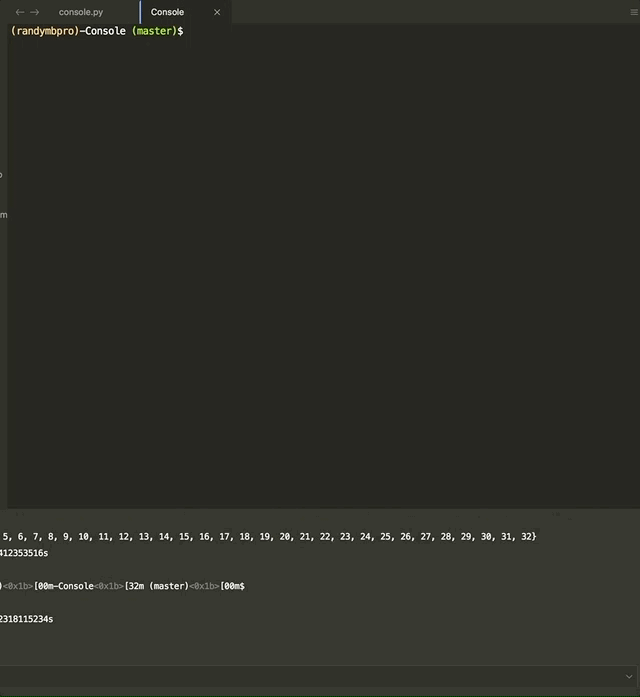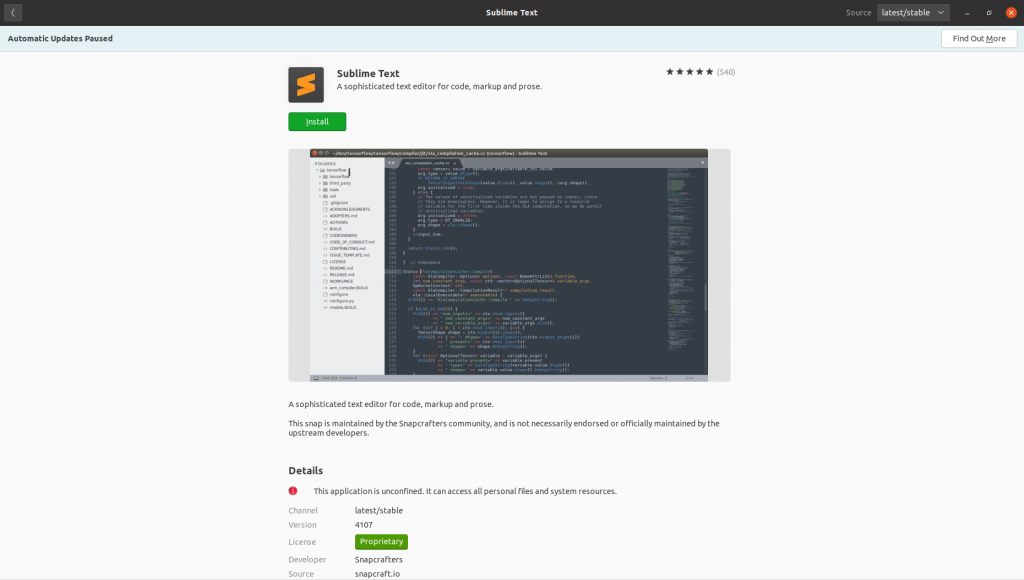

- #USING SUBLIME TEXT EDITOR THROUGH TERMINAL FOR FREE#
- #USING SUBLIME TEXT EDITOR THROUGH TERMINAL HOW TO#
- #USING SUBLIME TEXT EDITOR THROUGH TERMINAL INSTALL#
- #USING SUBLIME TEXT EDITOR THROUGH TERMINAL SOFTWARE#
- #USING SUBLIME TEXT EDITOR THROUGH TERMINAL CODE#
You must add a new forwarded port (52698) to your SSH connection.
#USING SUBLIME TEXT EDITOR THROUGH TERMINAL INSTALL#
Now search for the rsub package and hit enter again to install it. Initial configurationįire up ST3 on your local machine and open the Package Control panel (Ctrl-Shift-P on Linux/Win Cmd-Shift-P on Mac), type “install” and hit enter. For this post I’ll assume you have ST3 installed (including Package Control).
#USING SUBLIME TEXT EDITOR THROUGH TERMINAL HOW TO#
In a previous post I explained how to get ST3 up and running, and how to configure it in order to be able to edit R, Python, Stata, LaTeX and Julia scripts.
#USING SUBLIME TEXT EDITOR THROUGH TERMINAL FOR FREE#
SublimeText 3 (ST3) is a superb text editor that’s available for free on Windows, Mac and Linux. Both of these options suck, so I implemented a setup that works perfectly for me: edit remote text files locally using SublimeText 3 and have them automatically transferred via SSH onto the remote server. using Putty in Windows) or by tunneling X11 applications to use a GUI (something like Remote Desktop Environment).Įditing scripts through either of those methods is a pain in the ass, because you either do it via a laggy graphical interface or you edit directly within the command line using something like nano, which lacks syntax highlighting and other goodies. The two main methods for interacting with remote systems are either using SSH directly (ie. In the question 'What are the best text manipulation tools for Windows' Visual.
#USING SUBLIME TEXT EDITOR THROUGH TERMINAL CODE#
Nowadays I conduct most of my work in servers, like Microsoft Azure. When comparing Sublime Text vs Visual Studio Code, the Slant community recommends Visual Studio Code for most people. Editing remote scripts locally via SSH using SublimeText 3 It helped me form the knowledge I was able to share in this article. I really appreciate the answers on this stack overflow thread. I hope with this hack you will be able to setup an alias for Sublime Text. That's because we added a wildcard to the command. I will navigate into a code base now and show the difference in the next screenshot:įrom the screenshot above, Sublime doesn't just launch a blank workspace – it launches with all project folders associated with that project. I also figured out that if you have a working directory you can force Sublime to open that directory. Yes, it works! And you can see Sublime Text launch itself. Once we are done with that we can head back to our bash to check if our configuration worked by doing subl as shown below:

Once we've included that, we can press esc to exit insert mode and then :wq to save and exit. So we can add our alias there now, like this: alias subl='C:/Program\ Files/Sublime\ Text\ 3/sublime_text.exe' Now you have access and can type into the prompt. Then you need to press i to enter the insert mode. When we click on enter we will see an interface that looks somewhat like what we have below. bashrc file to include the alias we'll need to launch Sublime text: I have created the bash file within the specified directory, so mine looks like C:\Users\larry\.bashrc. It's important that the file be created within the C:\Users\username\ directory – otherwise you will get a permission denied error. Then we can proceed to explore various Linux commands in order to complete the configuration process. To begin configuring Git bash, we first need to open the bash terminal. How to Configure Git Bash with Sublime Alias Then when we type the alias into Git bash it auto launches the text editor. What we want to do is create an alias for the sublime_text.exe found within the Sublime Text 3 folder.

Once you've downloaded and installed Sublime, it will be located within the program files as shown below: All these features help make it easier and more comfortable to work with and contribute to a wide variety of programming language code bases. o If it doesn’t build, go back to step 2. To open sublime text from terminal open /Applications/Sublime\ Text.app/ To open a specific file in current path (or provide path to the file you need to open) using sublime text open -a /Applications/Sublime\ Text.app/ myFileToOpen.txt Make your command short by introducing a new alias named 'sublime' and use it. Type make in terminal (or press the up arrow key) and press enter. When you’re done editing, press Ctrl + S (or Command + S). It has amazing features such as syntax highlighting, indentation, plugins and packages. Go to the directory the assignment files are in.
#USING SUBLIME TEXT EDITOR THROUGH TERMINAL SOFTWARE#
Sublime text is a source code editor that helps software developers code and edit text or markup.


 0 kommentar(er)
0 kommentar(er)
